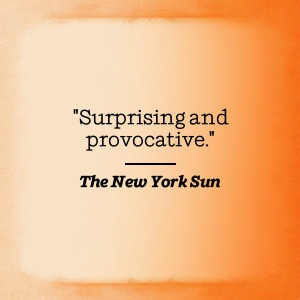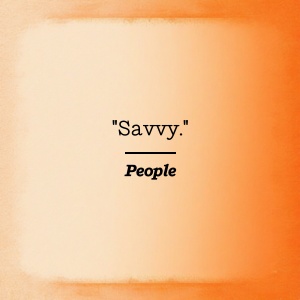Customer Services
Copyright © 2025 Desertcart Holdings Limited
Desert Online General Trading LLC
Dubai, United Arab Emirates


Made to Stick: Why Some Ideas Survive and Others Die



M**N
One of the best non-fiction books I've read - six stars out of five
I don’t usually write reviews of books, even good ones, but Made to Stick is so good I feel the need to make an exception.It is, quite simply, one of the best non-fiction books I have ever read – definitely in my top five, possibly top three.I won’t reiterate the main content: I can see other reviewers have done that. But I will say that the power of the book’s ideas combined with its clear, readable and lively presentation (“let’s skip now to another timeless and beautiful domain of expression: accounting”) make for one helluva package. This is one of those few books where I’ve bought both the hard copy as well as the Kindle version. That’s how good it is.While it’s still early days for me in applying the very practical lessons in Made to Stick they hold great promise in yielding high impact in thought leadership, providing learning, and marketing effectively. One example: I recently drafted an article for submission to a training magazine that has previously published half a dozen of my articles. Before I submitted it however, having just finished reading Made to Stick I ran the article through the author's checklist and made some changes (notably, creating some story-like case studies on which to hang the article, filling out my examples more concretely, and ensuring the core, simple idea came through clearly) and then submitted it. The editor’s response - on the same day I submitted it - was “…I wasn’t going to edit this today but once I started reading I could not stop…” As I say, very promising…There’s tremendous breadth in the areas you can apply the lessons in from Made to Stick: my interests range across learning and development, strategy, and marketing, and Made to Stick applies powerfully to each of these. But there are applications across all of business, government and not-for-profits, as well as if you’re a parent, an employee or anyone wanting to make an impact!One of the book’s real gifts for me was in sensitising me to my audience’s ‘higher’ motivations, rather than just baser or more selfish appeals (the authors refer to this as ‘getting out of Maslow’s basement’). This nicely reflected my underlying – but hitherto undeveloped – approach, enabling me to speak more authentically and forcefully, with greater resonance for my readership and clients.Another of the book’s great gifts for me was in teaching how to correctly use mental visualisation to solve problems and improve performance, in a nice and much-needed contrast to the pop-psychology and self-help gurus (The Secret – this means you!). This is a good thing to get at any time of the year, but especially when setting goals for the new year. And all of Made to Stick’s assertions are soundly backed by credible and solid academic research. Who would have thought you’d get all this in a book about communicating more clearly!The other terrific aspect of Made to Stick is its legacy in inviting people to look for stories in their own lives and experience. Stories play a key role in making ideas sticky - they’re concrete, credible and more memorable than straight facts: ‘facts tell, stories sell’. The authors emphasise that you don’t even have to create stories at all; rather, become a story spotter: just recognise when life is giving you the gift of a story to use. Nice.I may sound like I’m on commission for sales of Made to Stick (regrettably this is not so) but I am very enthusiastic about what this compact and considered book has to offer.Here’s my sticky recommendation: buy not one, not two, but three copies of this book: one for work, one for home, and one to keep in the glovebox of the car (so you can read it at the red traffic lights). And then join with me in lobbying the Gideons to place a copy in every motel room…
J**N
excellent read very inspiring
Very good read helped frame decision around messaging would recommend to anyone looking to get their name or vision out there
B**E
Useful book on creating sticky messages
"Made to Stick" is a useful book which explores how to make ideas more 'sticky' -- easier to accept and remember for people. The authors provide boatloads of examples of different messages and explain why some of these work and why some of these don't work and also give examples how you could change the message format (to say the same thing!) which would make it easier for people to remember.The book is well structured according to the author's message template for making sticky messages. The SUCCES acronym is this template used throughout the rest of the book. The next six chapters contain one of the elements of the message template. After that is an epilogue which summaries the book and makes some closing remarks. The last part contains a small article which was added after the first release of Made to Stick.The six chapters are for each of the elements of the SUCCES acronym: 1) Simple -- the point of the message needs to be simple and not buried deeply inside the message. 2) Unexpected -- When something unexpected happens in the message, a sudden change or so, then it will be easier to remember the message. 3) Concrete -- ideas ought to concrete with examples as most people are concrete thinkers and won't remember abstract ideas. 4) Credible -- the source of the idea and additional details can give an idea more credibility and making it easier to remember and accept. 5) Emotional -- trying to get an emotional reaction out of people based on a message makes it easier for people to remember. We want to be rational but we are emotional. 6) Stories -- Often good ideas and messages come in stories (with lots of concreteness and color). Formulating messages in stories will increase it's stickiness.Each of the above chapters contains dozens of stories, examples of good and bad messages, and tips on how to improve them. Also each chapter contains a clinic in which they take a message and, using the theme of the chapter, they give two different variants of the same message and explain why one is better than the other.All in all, I enjoyed reading Made to Stick. It was well written and I'll remember a lot of stories from the book as they were pretty... sticky. That said, while reading the book, there was no major Aha! moment, but instead if seemed to add words and concepts to things that I had already experienced. That also made it easy to accept what was written in Made to Stick. The book didn't dramatically change the way I create messages/ideas, but it did gave me a new thinking tool to use. I was going between 3 stars (does what it should do) and 4 stars (good and recommended). I decided to stick with 4 stars. Pretty good, especially for people who give training, are in marketing or in other ways need to make easy to remember -- sticky -- messages.
Trustpilot
1 day ago
1 week ago